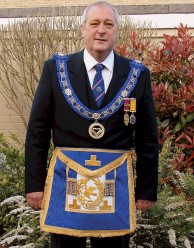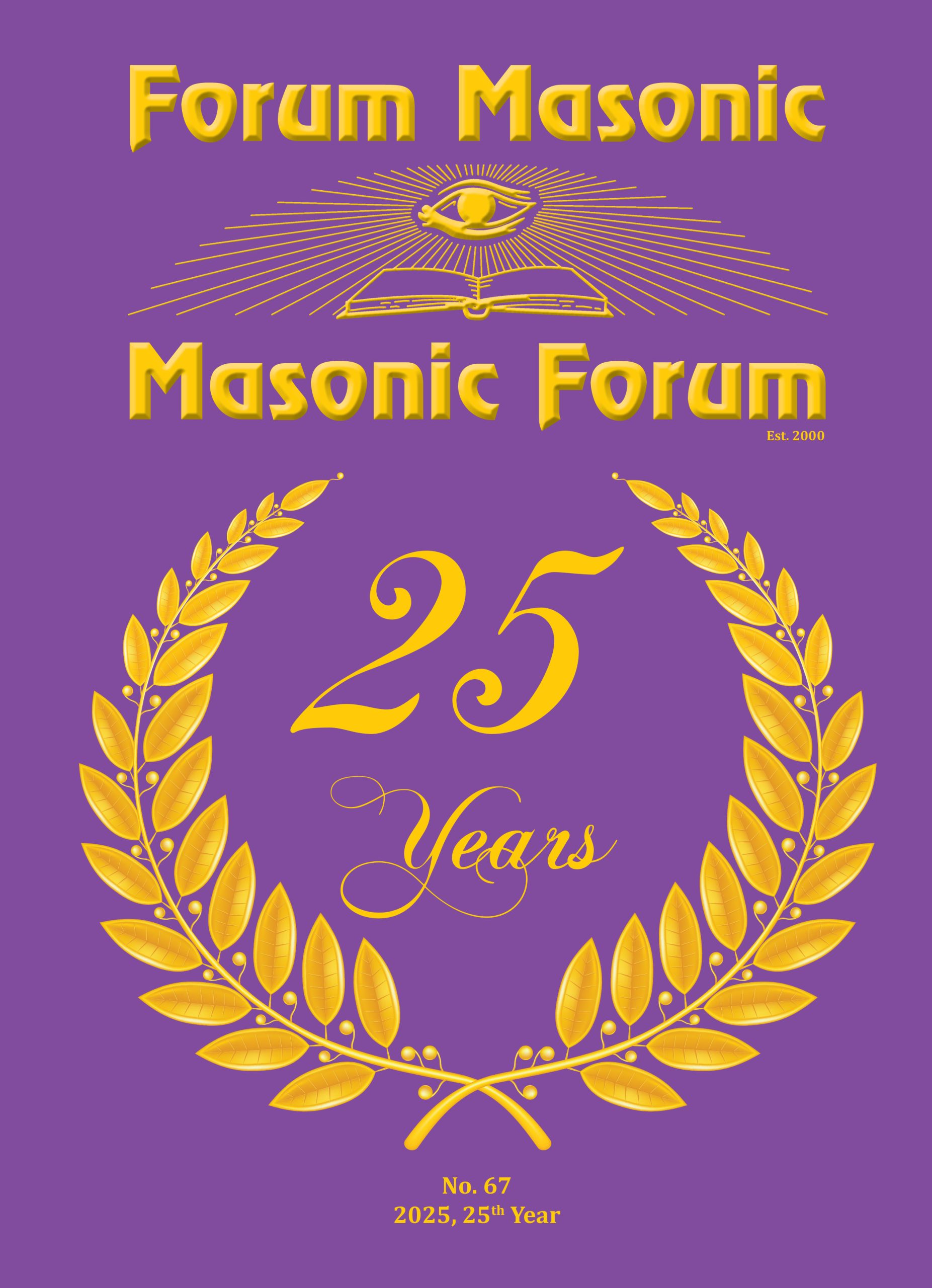ROGER WALTHAM
Assistant Provincial Grand Master, Province of East Kent, United Grand Lodge of England
Permanent Correspondent for MASONIC FORUM Magazine in England
I write this letter to you during that quiet time between Christmas and the New Year. In the modern world, where everything happens at high speed and where there is a constant demand upon us for immediacy in all things, it is indeed a great luxury to have this quiet time, during which one can find some mental space for reflection and thought. It is, I find, quite remarkable that the human mind can produce so much positive thought and so many ideas for the future from just a short period of mental stillness and quiet.
It appears to me that Freemasonry itself compares with that concept – finding positive paths forward more readily for itself from a period of calm and stillness, than from the cut and thrust of dramatic change. So, as you prepare for your celebrations of the rekindling of Masonic light in Romania on 24th January, the anniversary of the reconstitution of the National Grand Lodge of Romania in Bucharest in 1993, please take some time out to consider how Freemasonry is now growing organically throughout your country, and how the influence and contribution of Romanian Masonry to world-wide Freemasonry is steadily growing; not from dynamic and cutting-edge dynamism, but through the recognition of stillness, calm, consistency and stability.
I often reflect that English Freemasonry has evolved slowly through the generations, thus surviving the wreck of time, and has slowly adapted itself to changes within the world around it; it does not react to fashionable change, but evolves slowly to reflect long-term and permanent changes in society. Thus it successfully – and essentially – retains its adherence to its grand principles and tenets. Importantly, it also transmits to observers an accurate and impressive impression of solidity founded on deeply entrenched principles, integrity and an irrepressible continuity of high standards of behaviour – both the behaviour of the organisation and of its individual members. Long may that continue!
I have recently been made responsible for Communications and Publicity for the Masonic Province of East Kent, which takes me back to my business marketing roots and is a great delight to me. When I began to look at the whole communications subject, I was genuinely surprised at the great number of channels that exist: Provincial Grand Lodge to members; members to members; Lodges and Chapters to each other; Masonic Halls to members Lodges; members to senior members of the Province; etc., etc.. Effective communications are a basic and essential requirement in all aspects of life, whether it be husband to wife, employer to worker, or Freemasonry to the world. To ensure that the effectiveness is maintained, we all adapt (at varying speeds) to the use of advances in means of communication.
To begin with, Freemasons communicated by handwritten notes, which were hand-delivered – often by the servants of those who wrote the notes. Later, letters were delivered by an organised postal service. Then came the telegraph and telegrams for more urgent communications. Then the telephone – what an invention that was! I remember the widespread introduction of fax machines during the 1970s and my amazement at such advanced technology where the written word could be transmitted along a telephone line! For some time, now, we have benefitted from the introduction of email; another world-changing communication tool. Technology has now advanced once more and this is the era of digital communications, such as blogging and podcasting, and social media, such as Twitter and Facebook.
Younger Freemasons, in particular, use social media as their first choice for communicating with friends, loved ones, work colleagues, and the world at large. Older members are becoming increasingly more receptive to these new media and many have become proficient – and prolific – users of the technology. If we are to be visible and available to the current young generation – and inevitably to successive generations – then I believe we must embrace this powerful means of communicating with great enthusiasm.
This enthusiasm and commitment to modern media must, of course, be balanced with great care and caution. The careful management of the content of anything that is destined for the world-wide public domain must be well thought-out and organised, to ensure accuracy and consistency. There must be a social media users code-of-practice set-down for members, so that the world can see that Freemasons are thoughtful, caring and highly responsible men with high standards of behaviour and good manners. Many large organisations already have such codes-of-practice; in fact some large employers in various countries have made it a dismissable offence to behave irresponsibly or socially unacceptably when posting updates, comments or photographs.
Undoubtedly, then, digital communications and social media represent the way forward, but it is imperative to tackle the issues in a measured and cautious manner when setting-out our management structures and strategies for use. It is also of great importance to balance these new media with the older, more established and traditional means of communication. The printed word in publications such as this, remain a powerful and very important component in the communications mix. The communications armoury also needs to retain other important weapons such as the writing of personal letters from high rulers to “ordinary” members – a hugely powerful way, still, to deliver important messages from the Generals to the Troops. Email, of course, will remain an important platform for rapid and widespread messaging and two-way communications – either on an individual or group basis. Informative websites continue to be a great place for the public to find out about Freemasonry; they are also a good place for members to visit from where they can download information, forms, etc..
Yes, progress is important, exciting and essential; but as with all those things in Freemasonry that have stood the test of time, a positive engagement with all things new must be balanced with sound appraisal and caution. In a well-managed journey forward the key to long-term success is surely evolution, not revolution.
I hope you have found this brief foray into the importance of Masonic communications in the modern world as exciting and interesting as have I.
In closing this letter, I would like to share something with you. My mother Lodge, which is based in Maidstone (the County Town of Kent in the South East of England) uses Emulation ritual in its ceremonies and I would like to use an excerpt, if I may, from the Installation ceremony ritual, to extend to you all the heartfelt and very sincere good wishes, for the New Year, of myself and my good friend WBro Nick Waller (who is well known to many of you). The excerpt is from the Address to the Brethren: “…May Brotherly love and affection ever distinguish us as men and as Masons…”.
It is with that sentiment, my friends, that I wish you all a happy, healthy and contented 2012.
Yours sincerely & fraternally,
Roger Waltham





